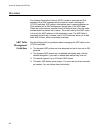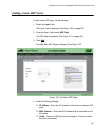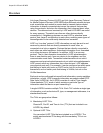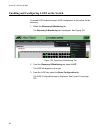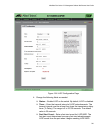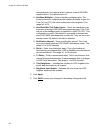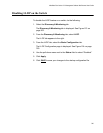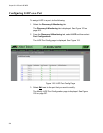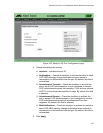
Chapter 25: LLDP and LLDP-MED
300
Overview
Link Layer Discovery Protocol (LLDP) and Link Layer Discovery Protocol
for Media Endpoint Devices (LLDP-MED) allow Ethernet network devices
such as switches and routers to receive and/or transmit device-related
information to directly connected devices on the network that are also
using the protocols, and store the information that is learned about other
devices. The data sent and received by LLDP and LLDP-MED are useful
for many reasons. The switch can discover other devices directly
connected to it. Neighboring devices can use LLDP to advertise some
parts of their Layer 2 configuration to each other, enabling some types of
misconfiguration to be more easily detected and corrected.
LLDP is a “one hop” protocol. LLDP information can only be sent to and
received by devices that are directly connected to each other, or
connected via a hub or repeater. Devices that are directly connected to
each other are called neighbors. Advertised information is not forwarded
on to other devices on the network. In addition, LLDP is a one-way
protocol. That is, the information transmitted in LLDP advertisements
flows in one direction only, from one device to its neighbors, and the
communication ends there. Transmitted advertisements do not solicit
responses and received advertisements do not solicit acknowledgements.
LLDP cannot solicit any information from other devices. LLDP operates
over physical ports only. For example, it can be configured on switch ports
that belong to static port trunks or LACP trunks, but not on the trunks
themselves, and on switch ports that belong to VLANs, but not on the
VLANs themselves.
Each port can be configured to transmit local information, receive neighbor
information, or both. LLDP transmits information as packets called LLDP
Data Units (LLDPDUs). An LLDPDU consists of a set of Type-Length-
Value elements (TLV), each of which contains a particular type of
information about the device or port transmitting it.
A single LLDPDU contains multiple TLVs. Each TLV includes a single type
of information, such as its device ID, type, or management addresses, in a
standardized format.
The TLVs are grouped as follows:
Mandatory LLDP TLVs:
Chassis ID, Port ID, and Time to Live (TTL) that are Included in an
LLDPDU by default.
Optional LLDP TLVs:
You can select LLDP TLVs that are included in an LLDPDU. The
switch sends selected TLVs along with the mandatory TLVs in an
LLDPDU.



